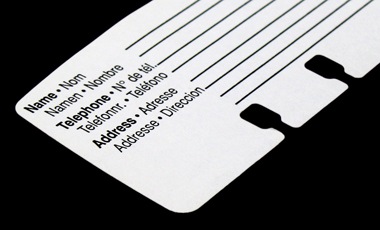Dear old Dad’s tried plenty of contact management systems in the intervening years from scanning business cards to handwritten notes in his daily planner. Low-tech or high-tech, none seem to work as well for him as that old Rolodex. The two key complaints are always space and flexibility. Most software programs have little more than fields for a name, a few phone numbers and an address — if you’re lucky, you can add a website. Daily planners may not even have room for those details. There are no options, beyond a simple notes section for the details that might help you make a sale down the road or cheer up a friend. One of the reasons that adding new contacts to Dad’s Rolodex was a time-consuming task was the need to transcribe all sorts of information off of the back of business cards before I was let loose with my glue stick. I learned to type by adding extra phone numbers, side businesses and a host of other details to the back of Rolodex cards: Dad notes these things down right after conversations so that he can remember all sorts of things about his new contacts. But those other systems he’s tried just don’t offer the flexibility necessary. I have similar issues with many of the address books and contact managements systems I’ve tried. At this point, I use Gmail — not because I consider Gmail’s address book any sort of killer app for contact management, but because I use Gmail for all of my email, and the address book happens to be there. In its favor, I can access my contacts just about anywhere I can get an internet connection, but there are plenty of features I’d love to see added.
The Seven Improvements I’d Love to Have Made to My Address Book
So, what capabilities are missing from your address book? What ability would turn your contact management system into the perfect tool?
